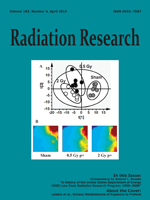One newly recognized consequence of radiation exposure may be the delayed development of diabetes and metabolic disease. We document the development of type 2 diabetes in a unique nonhuman primate cohort of monkeys that were whole-body irradiated with high doses (6.5–8.4 Gy) 5–9 years earlier. We report here a higher prevalence of type 2 diabetes in irradiated monkeys compared to age-matched nonirradiated monkeys. These irradiated diabetic primates demonstrate insulin resistance and hypertriglyceridemia, however, they lack the typical obese presentation of primate midlife diabetogenesis. Surprisingly, body composition analyses by computed tomography indicated that prior irradiation led to a specific loss of visceral fat mass. Prior irradiation led to reductions in insulin signaling effectiveness in skeletal muscle and higher monocyte chemoattractant protein 1 levels, indicative of increased inflammation. However, there was an absence of large defects in pancreatic function with radiation exposure, which has been documented previously in animal and human studies. Monkeys that remained healthy and did not become diabetic in the years after irradiation were significantly leaner and smaller, and were generally smaller and younger at the time of exposure. Irradiation also resulted in smaller stature in both diabetic and nondiabetic monkeys, compared to nonirradiated age-matched controls. Our study demonstrates that diabetogenesis postirradiation is not a consequence of disrupted adipose accumulation (generalized or in ectopic depots), nor generalized pancreatic failure, but suggests that peripheral tissues such as the musculature are impaired in their response to insulin exposure. Ongoing inflammation in these animals appears to be a consequence of radiation exposure and can interfere with insulin signaling. The reasons that some animals remain protected from diabetes as a late effect of irradiation are not clear, but may be related to body size. The translational relevance for these results suggest that muscle may be an important and underappreciated target organ for the delayed late effect of whole-body irradiation, leading to increased risk of insulin resistance and diabetes development.
How to translate text using browser tools
26 March 2015
Type 2 Diabetes is a Delayed Late Effect of Whole-Body Irradiation in Nonhuman Primates
Kylie Kavanagh,
Michael D. Dendinger,
Ashley T. Davis,
Thomas C. Register,
Ryne DeBo,
Greg Dugan,
J. Mark Cline
ACCESS THE FULL ARTICLE

Radiation Research
Vol. 183 • No. 4
April 2015
Vol. 183 • No. 4
April 2015




